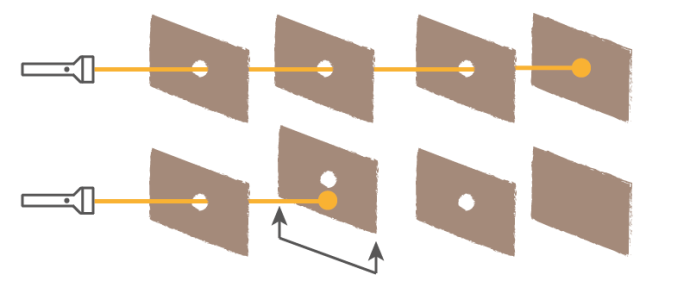One of the first people to study light was Ibn al-Haytham (known as Alhazen). He was a Muslim, living in Egypt in the early 11th Century. Alhazen is first person we know of who used the scientific method. He wanted to know why our eyes could see things. He found the answer by testing his ideas using lanterns and a hole in a wall. Light must bounce off an object and then travel into our eyes. He also found that it must move in a straight line.

Hans Lipperhey (also spelt Lippershey) was the first person to write down a design for a telescope. He made spectacles for a living, and in 1608 he applied for a patent for his new tool. He said it was "for seeing things far away as if they were nearby". Hans did not get the patent because other people were making similar tools. But, Hans was paid for his design. The first telescopes, known as Dutch Telescopes, contained both a convex and a concave lens.
Over 500 years after Alhazen, Isaac Newton took an interest in light and optics. Using a prism, he showed that white light was made up of a whole spectrum of colours. Newton knew this would be a problem for Dutch Telescopes. Their lenses would spread light out into the all the colours and make a blurry image. To solve the problem, he invented a new telescope which used mirrors. Almost every research telescope today is based on Newton's design. And that includes the Liverpool Telescope.
Until the 19th Century, the light our eyes can see (visible) was the only known type of light. In 1800, William Herschel did an experiment and made a discovery by chance. He was measuring the temperature of the different colours of light when he saw that the hottest point was not in any of the colours. It was in the space beyond the red light. Herschel knew that this must be due to a type of light ray which he could not see. He had discovered infrared light. Over the next 100 years the rest of the spectrum of light was found. We can now look at the Universe using the whole spectrum. There are telescopes which can see ultra-violet, X-ray, gamma ray, infrared, radio waves, and microwaves.
